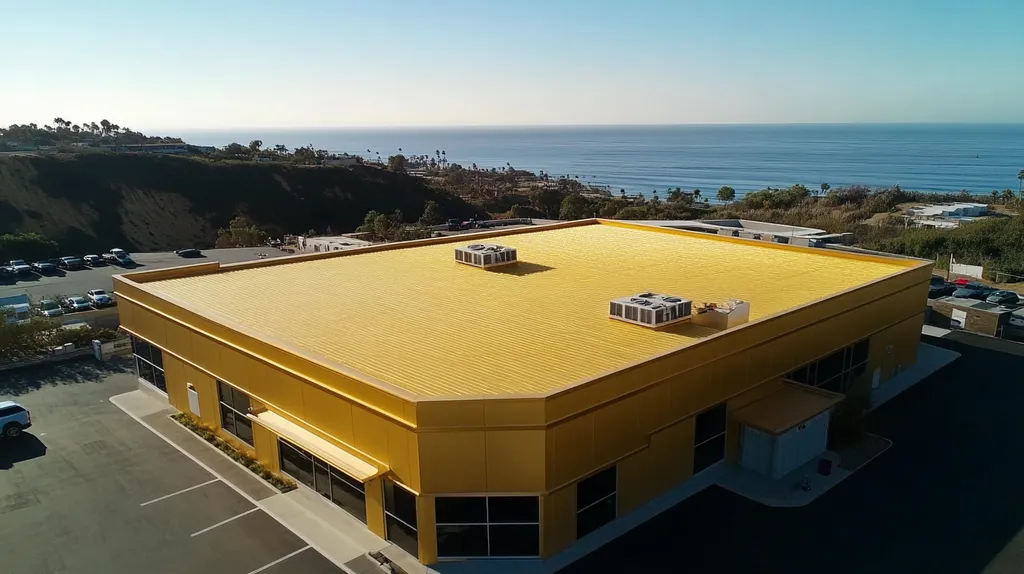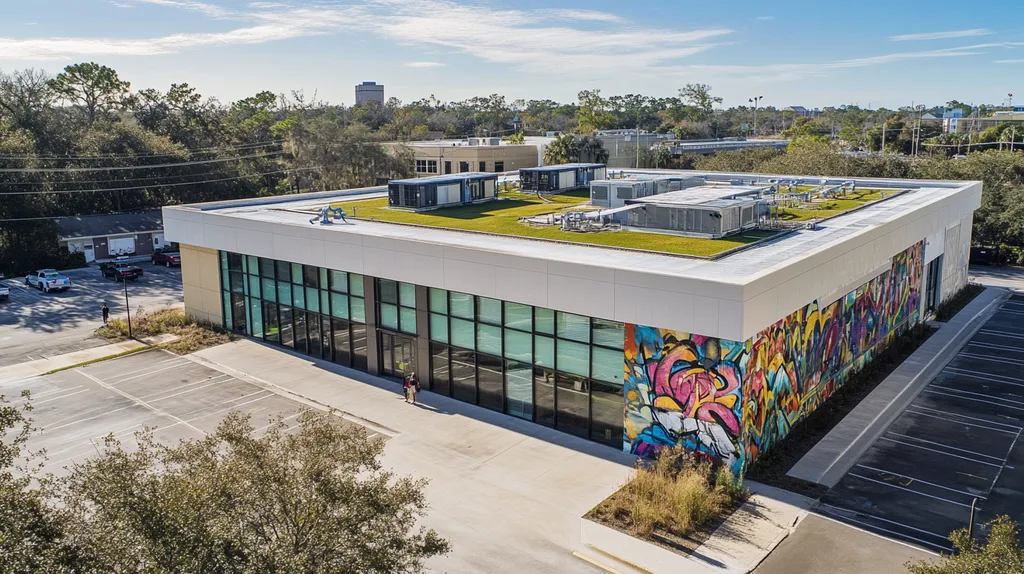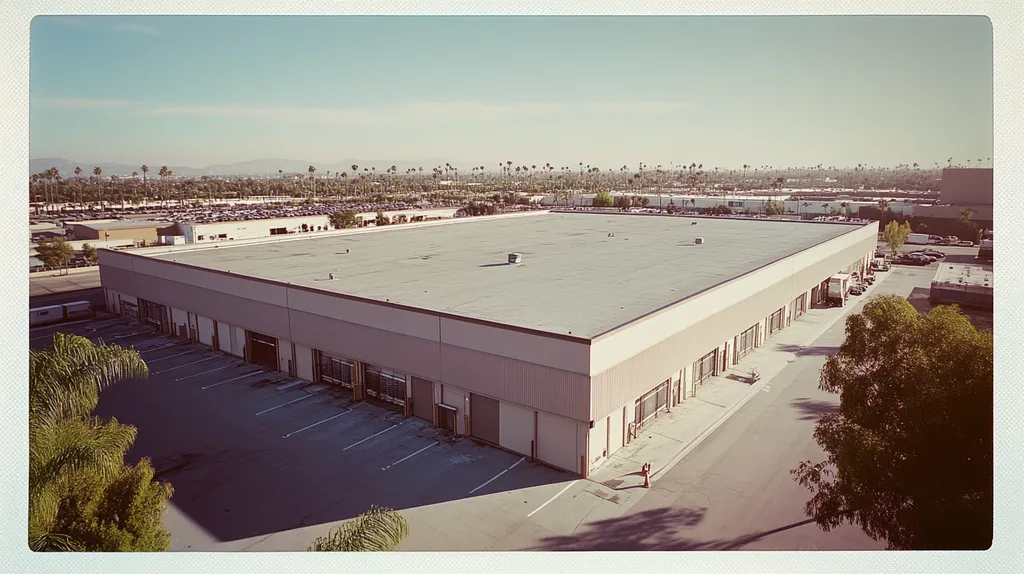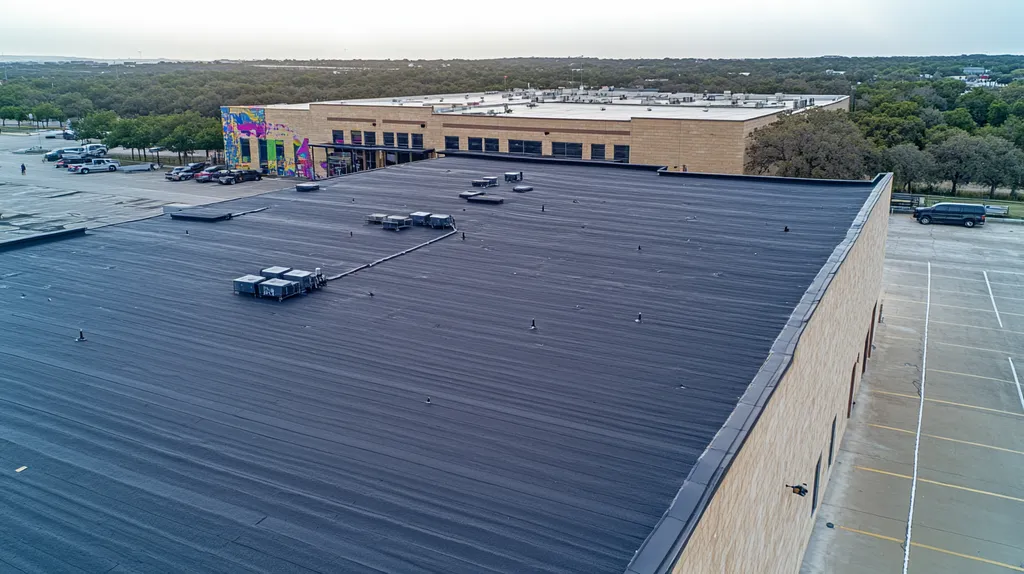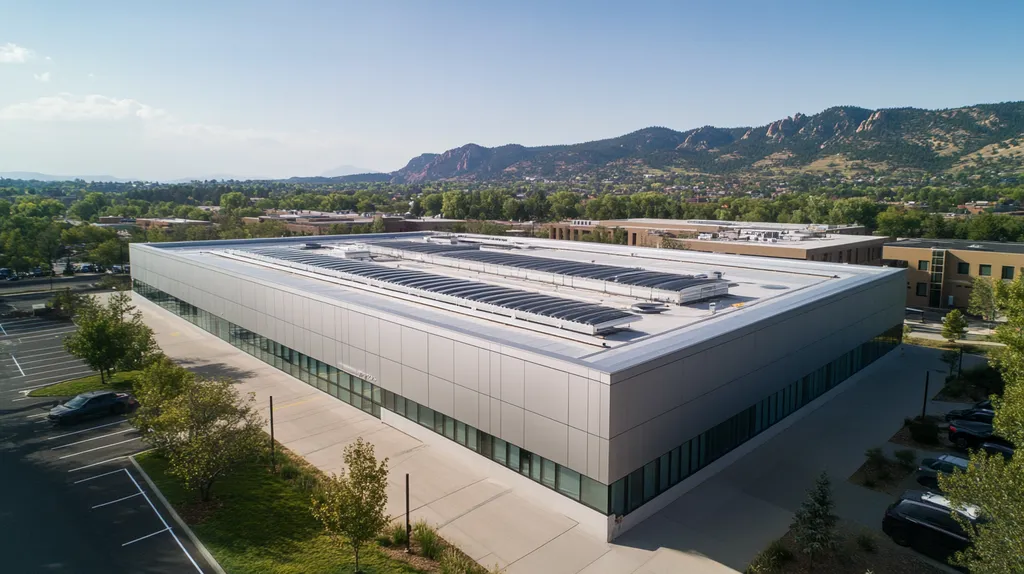Industrial roof work affects more than just building integrity—it directly impacts tenant operations, productivity, and satisfaction. Studies show that poorly managed roofing projects can reduce tenant productivity by up to 35% and lead to substantial revenue losses for both property owners and occupants.
From coordinating contractor access to managing noise levels, successful industrial roofing demands a comprehensive understanding of tenant concerns and operational requirements.
This handbook provides property owners and facility managers with proven strategies for maintaining tenant satisfaction throughout roofing projects while ensuring optimal building protection and value preservation.
SECTION 1: FUNDAMENTAL CONCEPTS
When undertaking industrial roof work, it’s crucial to consider tenant concerns, as they can significantly affect project timelines and budgets. If tenants face disruptions that hinder their operations, landlords could experience revenue losses. A survey reveals that 65% of tenants reported productivity drops during roofing projects. By proactively addressing tenant needs, landlords can enhance project efficiency, tenant satisfaction, and overall retention. This section delves into critical concepts, including lease agreements, types of repairs, and effective communication strategies.
Understanding Lease Agreements and Responsibilities
Lease agreements play a vital role in outlining responsibilities during industrial roof work. Landlords need to familiarize themselves with the specifics regarding maintenance and repair duties. Some leases designate the landlord as responsible for roof repairs, while others may shift this responsibility to the tenant. Understanding these details clarifies roles and helps prevent disputes.
Moreover, many leases include clauses that specify notice periods for repairs and tenants’ rights. Being aware of these terms can guide landlords in communicating effectively about upcoming work. Adhering to lease stipulations is essential to avoid legal issues that could complicate roofing projects.
Engaging tenants early in the planning stage is beneficial, as they may provide valuable insights regarding their operational needs. Addressing lease responsibilities upfront helps build collaboration and reduces friction once the project begins.
Ultimately, a solid understanding of the lease agreement paves the way for smoother roofing projects while keeping tenant concerns in focus. This proactive approach ensures compliance and contributes to a more effective repair process.
Identifying Structural vs. Non-Structural Repairs
Recognizing the difference between structural and non-structural repairs is essential in industrial roofing projects. Structural repairs pertain to the roof’s integrity, such as truss replacements or extensive waterproofing, demanding meticulous planning and potentially longer tenant disruptions.
Conversely, non-structural repairs involve routine tasks like patching leaks or replacing flashings, generally requiring less time and allowing for more flexible scheduling. Understanding these categories enables better planning and communication with tenants.
Structural repairs often require scaffolding and heavy equipment, which can elevate noise levels and increase disruptions. By anticipating these challenges, property managers can inform tenants in advance, setting the stage for seamless project execution. Clear communication about the nature of repairs helps minimize unnecessary frustrations.
Maintaining a precise distinction between these repair types also aids in efficient resource allocation. Prioritizing urgent repairs ensures that the project stays on track and that budgeting remains clear throughout the process.
Tenant and Landlord Communication Protocols
Establishing robust communication protocols between tenants and landlords is crucial for the successful management of roofing projects. Developing a solid communication plan from the outset sets clear expectations and eases tenant concerns. Regular updates on project milestones foster transparency and reduce disruptions.
Scheduled updates through meetings or emails can keep tenants informed about project progress and anticipated noise levels. For instance, a bi-weekly email detailing ongoing work enables tenants to plan their operations accordingly.
Creating channels for tenant feedback is equally important. This allows tenants to express their concerns directly, enabling landlords to address issues proactively before they escalate. A collaborative approach cultivates a positive atmosphere during potentially stressful periods.
Lastly, educating tenants on the necessity and benefits of roofing work can help alleviate resistance. When tenants understand how these efforts enhance property value and longevity, they may be more inclined to accommodate temporary disruptions.
SECTION 2: SYSTEM COMPONENTS
Choosing the right roofing system for an industrial facility is not just about protecting the building; it directly impacts tenant satisfaction and overall property value. Inadequate materials can lead to leaks, negatively affecting the working environment and potentially disrupting tenants’ operations. A study shows that roofing defects can cost businesses an average of $15,000 annually in repairs and lost productivity. Knowing the different roofing materials and systems available is essential for making informed decisions that benefit everyone involved.
Roofing Materials and Their Implications
Each roofing material comes with distinct advantages and disadvantages, influencing tenant experiences directly. For instance, single-ply membranes may offer a lightweight and easy-to-install option, but they might fall short in extreme weather conditions compared to sturdier built-up roofs.
The choice of materials also plays a significant role in energy efficiency. Reflective roof coatings, for example, can lower cooling costs by as much as 20%, creating a more comfortable atmosphere for tenants. Energy-efficient roofs can enhance productivity and satisfaction.
Lifespan is another crucial factor; while metal roofs can last up to 50 years, asphalt shingles typically last around 15 to 20 years. This difference can affect long-term tenant relationships and lease renewals.
In the end, selecting appropriate materials not only impacts the roof’s durability but also fosters trust with tenants, who may endure temporary inconveniences during the installation process.
Common Roofing Systems in Industrial Settings
Industrial facilities usually employ various roofing systems, each tailored for specific operational needs. TPO (Thermoplastic Olefin) roofing is favored for its blend of durability and cost-effectiveness, making it a reliable choice for property managers looking to manage budget constraints.
EPDM (Ethylene Propylene Diene Monomer) roofing offers tremendous waterproofing capabilities due to its elastic properties. This system helps minimize leaks—a significant concern for tenants—thus ensuring a hassle-free work environment.
Built-up roofing (BUR) systems are esteemed for their robustness and insulation properties. Able to withstand heavy foot traffic and adverse weather, these systems provide added benefits, enhancing safety and comfort for both property owners and tenants.
By grasping the distinctions between these roofing systems, property owners can make informed choices that not only meet the needs of tenants but also promote their overall satisfaction.
Equipment and Access Points on Roofs
Access to industrial roofs is vital for efficient maintenance and repairs, as well as enhancing the tenant experience. Well-placed access points are crucial for swift repair responses, preventing small issues from escalating into significant problems.
Strategically positioning roof-mounted equipment, such as HVAC units, is essential for effective maintenance while ensuring tenant comfort. Improperly sited equipment can lead to noise complaints and inadequate air circulation, disrupting productivity.
It’s equally important to communicate how equipment installations will affect tenants during maintenance windows. Outlining timelines and potential disruptions can help mitigate concerns, fostering better relationships with tenants.
A comprehensive plan for safe and efficient roof access not only promotes longevity for the building but also enhances tenant well-being, resulting in a more harmonious working environment.
SECTION 3: IMPLEMENTATION METHODS
Effective planning and execution of roofing work are crucial to maintaining positive relationships with tenants during industrial projects. Disruptions can lead to reduced productivity and financial setbacks for tenants, creating challenges for property owners. By prioritizing thoughtful scheduling, minimizing operational impacts, and optimizing contractor access, facility managers can address tenant concerns proactively. This section provides actionable strategies to enhance tenant experiences while managing essential roofing tasks.
Planning and Scheduling Roof Work
Strategic planning is vital for aligning roofing activities with tenant operations. Assessing peak hours of activity enables property managers to select less disruptive timeframes for work, such as scheduling projects during weekends or off-hours. This simple adjustment can greatly reduce any negative impact on tenant productivity.
Communicating planned schedules clearly and well in advance further empowers tenants to prepare effectively. A detailed timeline of roofing activities promotes transparency and helps build trust, ensuring tenants feel valued and informed throughout the process.
Utilizing project management tools can enhance coordination, allowing all stakeholders to track progress and deadlines. These tools help ensure that responsibilities are clear and that roofing tasks proceed smoothly, avoiding unnecessary delays.
Regular check-ins with tenants throughout the roofing project are essential for addressing any emerging concerns. Open lines of communication convey commitment and understanding, significantly improving the tenant experience during construction.
Minimizing Disruptions to Tenant Operations
To effectively minimize disruptions, contractors should implement noise and dust reduction techniques. Using quieter machinery and adopting dust suppression strategies significantly lessen disturbances during peak working hours, thereby maintaining a conducive environment for tenant operations.
Physical barriers, such as mesh tarps, can also protect tenants from falling debris while keeping safety compliance in mind. These measures reassure tenants that their workspaces remain secure even amidst construction activities.
Designating clear pathways for contractor movement not only promotes safety but also minimizes confusion. Ensuring that contractors adhere to these guidelines helps maintain operations without unnecessary interruptions to tenant productivity.
Providing tenants with progress reports following critical phases of the project helps keep everyone informed and involved. These updates serve to reinforce a positive atmosphere during construction and demonstrate attentiveness to tenant concerns.
Managing Contractor Access and Storage
Efficiently managing contractor access and material storage is critical for minimizing tenant disruptions. Clearly defined access points streamline contractor movement while protecting tenant areas, ultimately decreasing downtime and enhancing overall site efficiency.
Implementing a strategy for material storage is also important. By designating specific zones for materials, property managers can maintain clear pathways and uphold operational integrity. This organized approach prevents clutter that could interfere with daily tenant activities.
Designating an onsite point person can facilitate communication between contractors and tenants. This liaison ensures smooth operations and enables quick resolutions to any issues that arise, fostering positive interactions.
Finally, establishing set working hours for contractors allows tenants to anticipate potential impacts on their operations. Adhering to these hours showcases professionalism and significantly cuts down on disturbances, ensuring that projects progress as efficiently as possible.
SECTION 4: MAINTENANCE REQUIREMENTS
Maintaining an industrial roof is essential not only for its longevity but also for ensuring tenant productivity and safety. According to the National Roofing Contractors Association, a staggering 30% of roof failures stem from inadequate maintenance. Regular inspections and proactive maintenance can prevent costly disruptions for tenants while protecting property value. Understanding roof maintenance requirements is key to balancing long-term roof integrity with tenant satisfaction.
Regular Inspection and Maintenance Practices
Regular inspections are vital for optimal roof performance. Property owners should schedule at least two comprehensive inspections annually. This proactive strategy allows for early detection of issues like leaks or wear and tear, which could severely disrupt tenant operations.
During these inspections, it’s crucial to check for debris accumulation, cracks, and overall membrane integrity. Failing to address these elements could exacerbate roof deterioration, leading to unexpected repairs. For instance, a small crack can quickly evolve into a leak, causing damage not only to the roof but also to the tenant’s workspace.
Scheduling maintenance during off-peak hours is an effective way to minimize disruptions for tenants. Coordinating with tenants ensures that any necessary work does not interfere with their operations, thus maintaining high levels of tenant satisfaction while addressing roof requirements.
Maintaining thorough records of maintenance activities is another best practice. This documentation aids in planning future work, tracking performance, and providing transparency to tenants regarding property upkeep.
Addressing Weather and Vendor-Related Damage
Weather can greatly impact the integrity of industrial roofs, underscoring the need for a robust response plan. For instance, roofing systems in areas prone to heavy snowfall must be designed to handle that extra weight. Failing to address weather-related damage quickly can have severe consequences for tenant safety and well-being.
After significant weather events, property owners should evaluate their roofs. This assessment helps identify immediate repairs needed to stop further damage. In sunny climates, excessive UV rays can degrade roofing materials, necessitating closer monitoring and evaluations.
Collaborating with reliable vendors for repairs and maintenance ensures quality work and timely responses. Contractors should be well-versed in the roofing system and the specific operational needs of the building to minimize tenant disruptions.
Quickly addressing any vendor-related issues is equally essential. If a contractor causes damage, a rapid resolution is vital to maintain tenant trust and satisfaction, preventing dissatisfaction that could spiral into larger problems.
Tenant Roles in Roof Maintenance and Repair
Tenants can significantly contribute to roof maintenance by promptly reporting issues. Establishing clear communication channels allows tenants to alert property managers about visible problems, like leaks or drainage concerns. Early reporting can save substantial costs and minimize tenant disruptions.
Educating tenants on basic roof care is crucial. For example, informing them not to store heavy materials close to roof edges can prevent undue stress on the roofing system. Regular reminders help tenants stay vigilant regarding their surroundings.
Tenant involvement in maintenance discussions fosters collaboration. Regular meetings to review roof health can help ensure that tenant concerns are acknowledged, strengthening the relationship between property managers and their occupants.
Encouraging tenants to report unusual odors or water spots aids in early issue detection. A proactive approach to tenant involvement in maintenance fosters a safe and functional roof environment, benefiting everyone involved.
SECTION 5: PERFORMANCE METRICS
Understanding roof performance metrics is vital for enhancing tenant satisfaction and safeguarding property value. Neglecting roof condition can result in tenant complaints, costly repairs, and revenue losses. Industry statistics show that over half of property managers believe roofing problems directly influence tenant retention. By diligently monitoring performance metrics, property owners and facility managers can address concerns proactively, leading to improved operational efficiency.
Monitoring Roof Condition and Performance
Regular assessments of the roof’s condition are necessary for achieving optimal performance. A well-structured inspection schedule should involve visual evaluations, moisture surveys, and advanced techniques like infrared thermography. Consistent assessments help catch potential problems early before they become significant issues.
Key performance indicators, such as leak frequency and repair response time, provide critical insights into roof health. If leaks occur more than twice annually, it may indicate the need for a shift in maintenance strategy. Analyzing such trends enables informed decisions regarding repairs or even replacing the roof.
Additionally, leveraging technology like roof management software can enhance monitoring capabilities. This type of software allows for logging inspections, documenting repairs, and generating comprehensive reports, making it easier to evaluate performance over time.
Incorporating these performance metrics into tenant communications is equally important. Being transparent about roof conditions fosters trust and can help alleviate tenant concerns during repair efforts.
Tracking Maintenance and Repair Costs
Effectively managing maintenance and repair costs is crucial for maintaining a balanced budget. Property owners should keep detailed records of all expenses related to roof upkeep, including routine maintenance and unexpected repairs.
Continuously tracking these costs offers a clear financial overview. This information can help property managers justify required roofing investments and determine their cost-effectiveness. For example, if repair expenses constantly exceed budget estimates, it may indicate that the current roofing system is falling short.
Additionally, recognizing trends in these costs guides future roofing decisions. If maintenance expenses continue to rise, it may prompt management to consider alternatives such as roof replacement or adopting different materials.
Sharing maintenance cost updates with tenants can also prove advantageous. When tenants grasp how maintenance affects overall operational costs, they are often more understanding during necessary roofing work.
Assessing Tenant Satisfaction and Feedback
Gathering feedback from tenants is pivotal for measuring satisfaction during roofing projects. Implementing surveys can shed light on tenant experiences, allowing property managers to make timely adjustments. Regular communication throughout roofing activities reassures tenants that their concerns are being prioritized.
Monitoring feedback over time can reveal important patterns. If multiple tenants express concerns regarding noise or disruptions, that information is valuable for future project planning and execution.
Moreover, establishing strong relationships with tenants through active engagement can significantly enhance their satisfaction levels. Providing updates and managing expectations fosters a sense of partnership.
Ultimately, prioritizing tenant feedback not only reduces complaints but also strengthens long-term relationships. Contented tenants are more likely to renew leases and maintain active community involvement.
SECTION 5: PERFORMANCE METRICS
Understanding roof performance metrics is essential for enhancing tenant satisfaction and protecting property value. Neglecting roof conditions can lead to tenant complaints, costly repairs, and significant revenue losses. Studies indicate that over 50% of property managers acknowledge roofing issues as a direct factor influencing tenant retention. By actively monitoring performance metrics, property owners and facility managers can identify and address concerns before they escalate, leading to improved operational efficiency.
Monitoring Roof Condition and Performance
Regular assessments of the roof’s condition are crucial for achieving optimal performance. A well-structured inspection schedule should include visual checks, moisture surveys, and advanced techniques like infrared thermography. By establishing routine evaluations, potential issues can be identified before they develop into serious problems.
Tracking key performance indicators, such as the frequency of leaks and the response time for repairs, provides valuable insights into overall roof health. If leaks occur more than twice a year, this may indicate a need to reassess the maintenance strategy. Analyzing these trends empowers property managers to make informed decisions regarding future repairs or potential roof replacements.
Technology, such as roof management software, can streamline monitoring efforts. This software effectively logs inspections, tracks repairs, and generates comprehensive reports that simplify performance evaluations over time.
Integrating transparency about roof conditions into tenant communication is equally important. Sharing this information helps build trust and can significantly minimize tenant concerns during repair projects.
Tracking Maintenance and Repair Costs
Managing maintenance and repair costs is key to maintaining a balanced budget. Property owners should keep detailed records of all roof-related expenses, encompassing routine upkeep, unexpected repairs, and associated lifecycle costs.
Keeping tabs on these expenses offers a clear financial overview, allowing property managers to justify roofing investments and analyze their cost-effectiveness. For example, if repair costs consistently exceed budget estimates, this may highlight the inadequacy of the current roofing system.
Additionally, recognizing patterns in maintenance costs can inform future roofing strategies. If repair expenses continue to rise, it may prompt management to consider alternatives, such as roof replacement or switching to a different roofing material.
Communicating these costs to tenants can also be beneficial. When tenants understand how maintenance efforts affect overall operational costs, they are often more patient during necessary roofing work.
Assessing Tenant Satisfaction and Feedback
Collecting feedback from tenants is invaluable for gauging satisfaction throughout roof work. Implementing surveys provides insights into tenant experiences, helping property managers make timely adjustments when necessary. Consistent communication during roofing projects reassures tenants that their concerns are being actively addressed.
Tracking feedback over time helps identify trends. If multiple tenants report dissatisfaction regarding noise or disruptions during roofing work, this information can significantly influence future project planning and execution.
Building strong relationships with tenants through active engagement can greatly enhance satisfaction levels. Keeping tenants informed about updates and expected timelines fosters a sense of partnership and collaboration.
Ultimately, prioritizing tenant feedback not only reduces complaints but also strengthens long-term relationships. Content tenants are more likely to renew leases and remain engaged within the community.
Looking Ahead
With industrial roof repairs causing up to 35% productivity loss and significant revenue impacts, property owners can no longer afford to overlook tenant concerns during roofing projects.
The integration of modern communication protocols, strategic scheduling, and performance tracking has become essential for successful industrial roof work.
Studies show that properties implementing comprehensive tenant consideration programs during roof work experience 40% higher lease renewal rates and reduced maintenance costs.
By prioritizing tenant satisfaction through proactive maintenance, clear communication, and minimal disruption strategies, property owners can transform potentially disruptive roofing projects into opportunities for strengthening tenant relationships and enhancing property value.
The future of industrial roofing lies in balancing technical excellence with tenant-centric approaches that protect both the building envelope and business operations.
FREQUENTLY ASKED QUESTIONS
Q. What are tenant concerns during commercial roof work?
A. Tenant concerns often include disruptions to daily operations, noise levels, and safety issues. Addressing these upfront can enhance cooperation and mitigate productivity drops. Clear communication and understanding operational hours help alleviate stress during roofing projects.
Q. How to select the best industrial roof materials?
A. Selecting the right materials focuses on durability, energy efficiency, and tenant comfort. For example, reflective coatings can reduce cooling costs, while sturdier options offer longer lifespans. Evaluating climate and operational needs ensures optimal choices that benefit tenants.
Q. What scheduling strategies help minimize tenant disruptions?
A. Scheduling work during off-peak hours or weekends can significantly reduce disruptions. Notify tenants well in advance about timelines and adjust plans based on peak operational hours to maintain productivity. Regular updates foster open communication and trust.
Q. How to ensure safety during industrial roof work?
A. Implement safety measures such as physical barriers, clear pathways, and designated access points. Providing safety briefings and regular updates to tenants can alleviate concerns and ensure a secure environment throughout the roofing project.
Q. What role does routine maintenance play for commercial roofs?
A. Routine maintenance is critical for preventing costly repairs and ensuring tenant satisfaction. Regular inspections catch minor issues before they escalate, protecting both the roof and the tenant’s working environment. Following a structured maintenance plan promotes long-term reliability.
Q. How can property managers assess tenant satisfaction?
A. Conducting regular surveys and feedback sessions helps gauge tenant satisfaction. Monitoring their experiences during roofing projects can identify potential improvements for future tasks. Establishing strong relationships through communication fosters loyalty and increases lease renewals.
Q. What alternative roofing systems exist for commercial buildings?
A. Several roofing systems exist, including TPO for cost-effectiveness, and EPDM for optimal waterproofing. Built-up roofs provide durability and insulation. Each option caters to different operational needs and climates, enhancing tenant satisfaction and building value.

